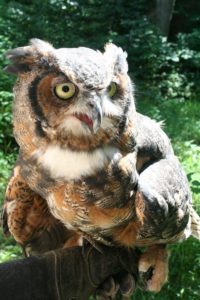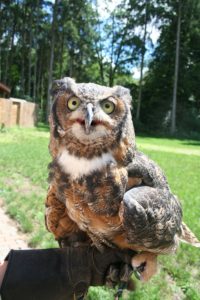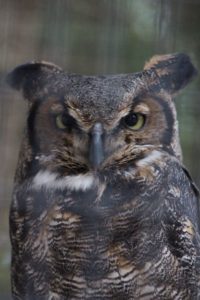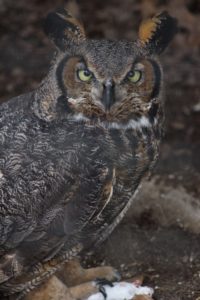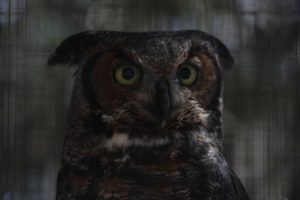GREAT HORNED OWLBubo virginianus
Conservation Status: Low Risk / Least Concern

Learn More
Color:
Rust-colored facial disc; large, erect ear tufts; yellow eyes; white chin and throat; upperparts are grayish to gray-brown, mottled, and barred; underparts are brownish with a reddish tinge, also mottled; fully feathered legs and feet are buff to tawny
Size:
20 – 23.6 inches
Weight:
Female 2.2 – 5.5 pounds; Male 1.5 – 3.2 pounds
Average Lifespan:
13 years
Captive Lifespan:
29 years
United States, Canada, Mexico, Central America, and parts of South America
Every type of woodland, farmland, desert with scrub, mountainous areas, mangroves, and urban areas
Mating:
December – July
Gestation/Incubation:
28 – 30 days
Litter/Clutch Size:
1-3 eggs
Mature:
Remain in nest 35 – 45 days; cared for by parents up to 5 months
Birds, mammals, fish, snakes, insects, other owls
Mainly resident and territorial. Makes deep hooting calls to announce its presence. Hunts mostly at dusk or during the night.
1. Great horned owls hunt from a perch, making shallow, gliding drops to its prey.
2. These owls utilize old nests of other large birds, or nest in hollows in trees and sometimes in caves or among tree roots.

